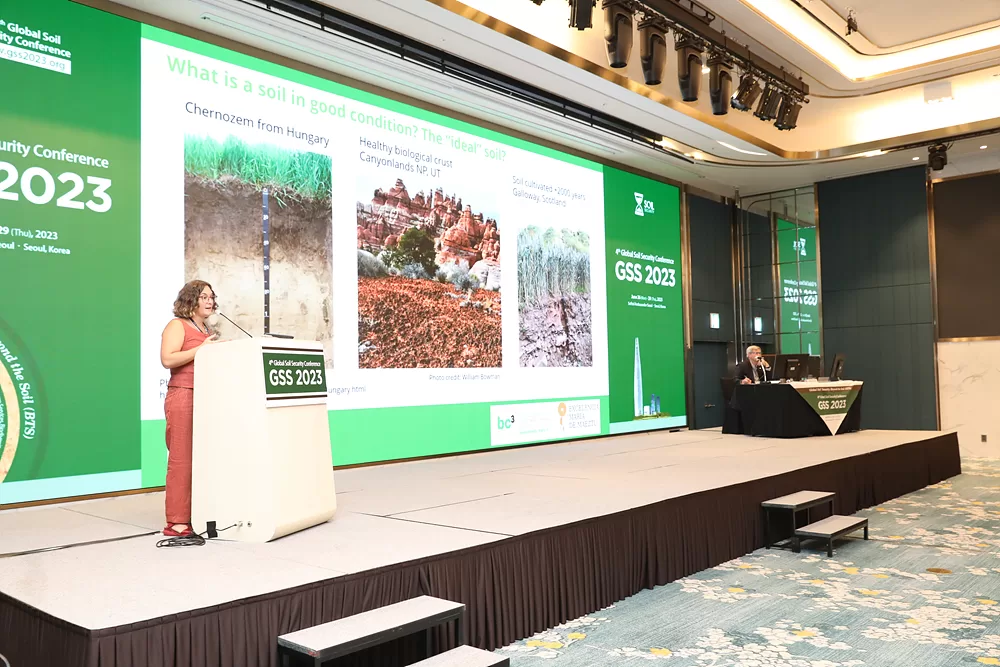Discussing soil security at GSS2023


On June 26-29, the 4th Global Soil Security Conference 2023 (GSS2023) was celebrated in Seoul, Korea, with the theme ‘Global Soil Security: Beyond the Soil (BTS)’. The event, hosted by the Korean Society of Soil Science and Fertilizer (KSSSF), reunited 192 presentations and over 260 delegates from 24 countries to discuss how sustainable soil management is needed for solving humanity and planetary existential challenges.
BC3 MSCA researcher Mercedes Román presented Soil condition and capability mapping for sustainable forest management (SELVANS): a European research project that will be carried out in BC3 with Ikerbasque Research Professor Jorge Curiel, to evaluate the condition of soils in different ecosystems, from the Basque forests to the agrosilvopastoral systems (dehesas) of Extremadura.
“The first goal of SELVANS is to map soils that can be used as reference states to assess the effects of management on soil condition (soil health), i.e., whether it improves soil functionality or augments the risk of soil degradation. SELVANS aims to adapt a digital soil mapping framework developed at the University of Sydney for assessing the condition of Australian soils to a very different context in terms of environment and land use history.” (BC3 MSCA researcher Mercedes Román)
The conference encompassed the different dimensions of soil security, with important contributions in the area of policy and governance, and economic valuation of soil-based ecosystem services.
Soil security is an emerging concept that recognises the protection and maintenance of soil resources and the ecosystem services they provide as an existential challenge.
With a wide scope, soil security considers biophysical attributes, policy and governance, educational and socioeconomic aspects of soil management towards improving food security, water security, energy security, climate change adaptation and mitigation, human health, biodiversity and ecosystem functioning.
“The European Union aims to “ensure that 75% of soils are healthy by 2030”, but how can we decide when a soil is healthy? The image of organic matter-rich prairie soils is what often comes to mind as the “ideal soil”, but in very different climatic conditions, just a few millimetres of low organic matter-soil can sustain an ecosystem with significant biodiversity, aesthetic, and cultural value. The condition (or health) of a soil can be defined differently depending on the specific soil. This is why finding local references is very important for targeting management goals.” (BC3 MSCA researcher Mercedes Román)
More information on the original concepts of Soil Security can be found in the 2014 seminal paper The dimensions of soil security by Alex McBratney, Damien J. Field, and Andrea Koch (https://www.sciencedirect.com/science/article/pii/S0016706113002954)
